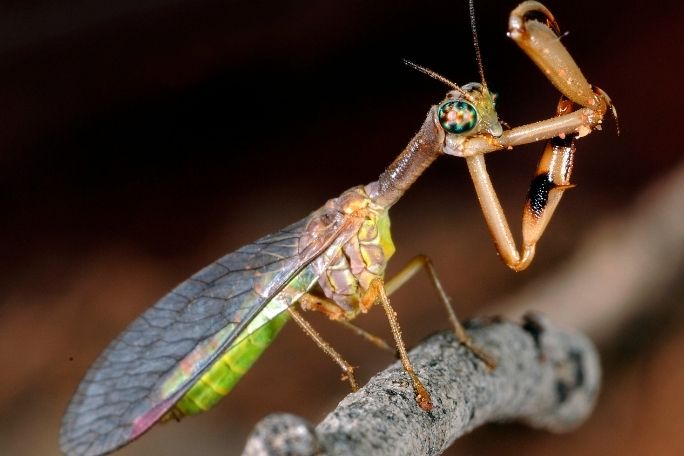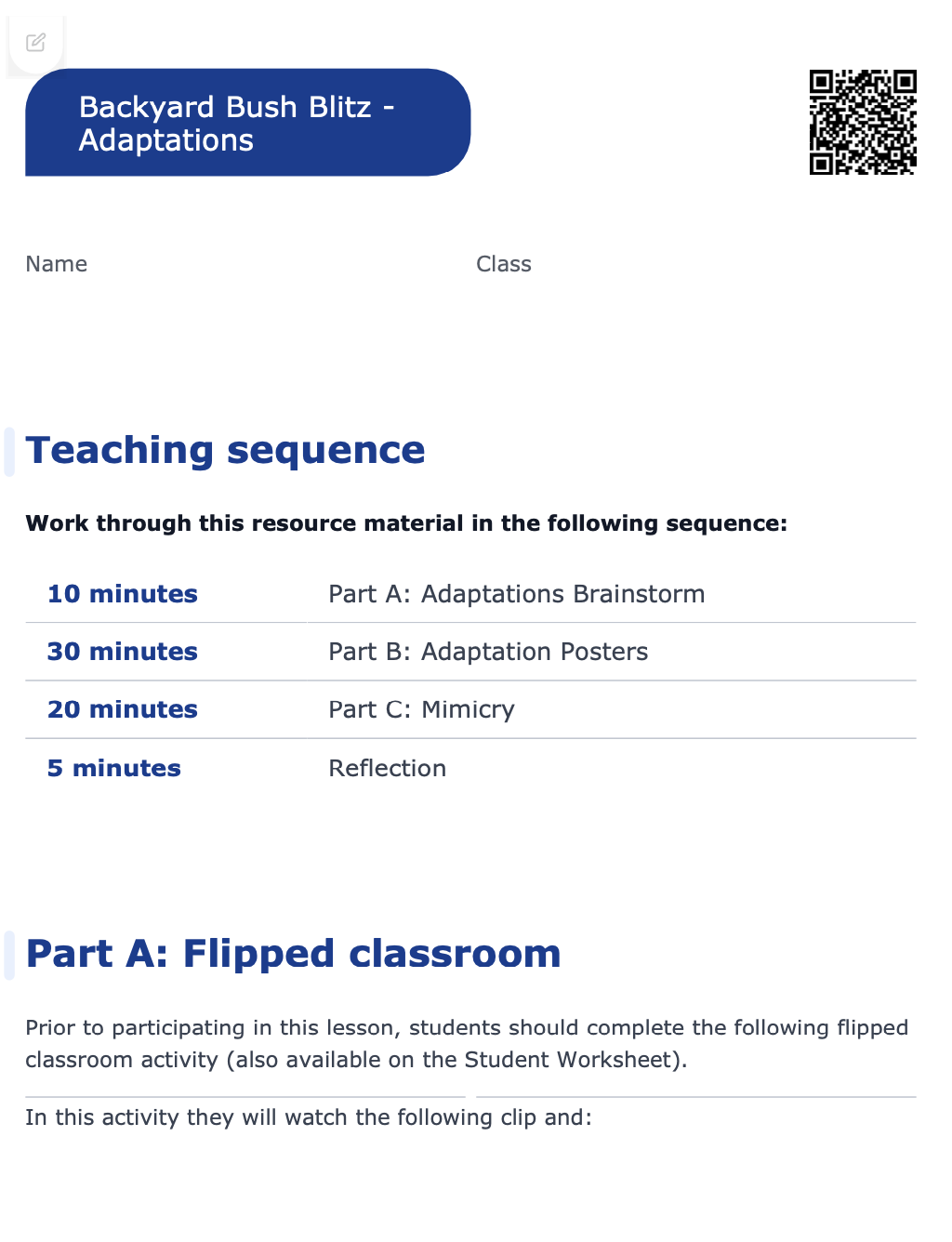Lesson summary
Students brainstorm traits that help organisms survive in their environment, identifying them as structural, behavioural or physiological. They then explore how adaptations only help an animal thrive in their particular habitat. Students will create a poster showing the adaptations of a newly discovered subspecies that allow the organism to survive in its habitat. They will also learn about mimicry and research plant and animal mimicry.
Learning intentions:
Students will...
- understand that adaptations, or adaptive traits, help an animal survive and reproduce under the specific biotic and abiotic factors of their environment
- understand how to identify and describe the adaptations of specific animals
- understand the biotic and abiotic factors in an environment
- understand the advantages of mimicry in relation to a specific plant or animal.
Success criteria:
Students can...
- predict outcomes and provide justifications
- create an informative poster
- conduct research and communicate findings
- work collaboratively and independently.
Lesson guides and printables
Lesson details
Curriculum mapping
Australian Curriculum content descriptions:
Year 9 Science:
- Use models, including food webs, to represent matter and energy flow in ecosystems and predict the impact of changing abiotic and biotic factors on populations (AC9S7U02)
- Write and create texts to communicate ideas, findings and arguments for specific purposes and audiences, including selection of appropriate language and text features, using digital tools as appropriate (AC9S7I08)
Syllabus outcomes: SC5-9WS, SC5-14LW
General capabilities: Literacy, Creative and Critical Thinking
Cross-curriculum priority: Sustainability
Relevant parts of Year 9 achievement standards: Students analyse how biological systems function and respond to external changes with reference to interdependencies, energy transfers and flows of matter. They evaluate others’ methods and explanations from a scientific perspective and use appropriate language and representations when communicating their findings and ideas to specific audiences.
This lesson is part of the wider unit of work Backyard Bush Blitz – Year 9
Resources required
- A3 paper or a digital poster-making app
- Device capable of accessing the internet and presenting a video to the class (optional)
- Bush Blitz Information Sheet – one animal per pair
- Student devices capable of creating audio-visual recordings, such as iPads or cameras
- Student Worksheets – one copy per student
Skills
This lesson is designed to build students’ competencies in the following skills:
- Communication
- Critical thinking
- Collaboration
- Problem solving
Additional info
Time required: 75 mins
Level of teacher scaffolding: Medium – facilitate class discussion and activities
This is an original Cool+ lesson.




Welcome back!
Don't have an account yet?
Log in with:
By signing up to Cool.org you consent and agree to Cool's privacy policy to
store, manage and process your personal information. To read more, please see
our privacy policy here(Opens in new tab).
Create your free Cool.org account.
Many of our resources are free, with an option to upgrade to Cool+ for premium content.
Already have an account?
Sign up with:
By signing up to Cool.org you consent and agree to Cool's privacy policy to
store, manage and process your personal information. To read more, please see
our privacy policy here(Opens in new tab).